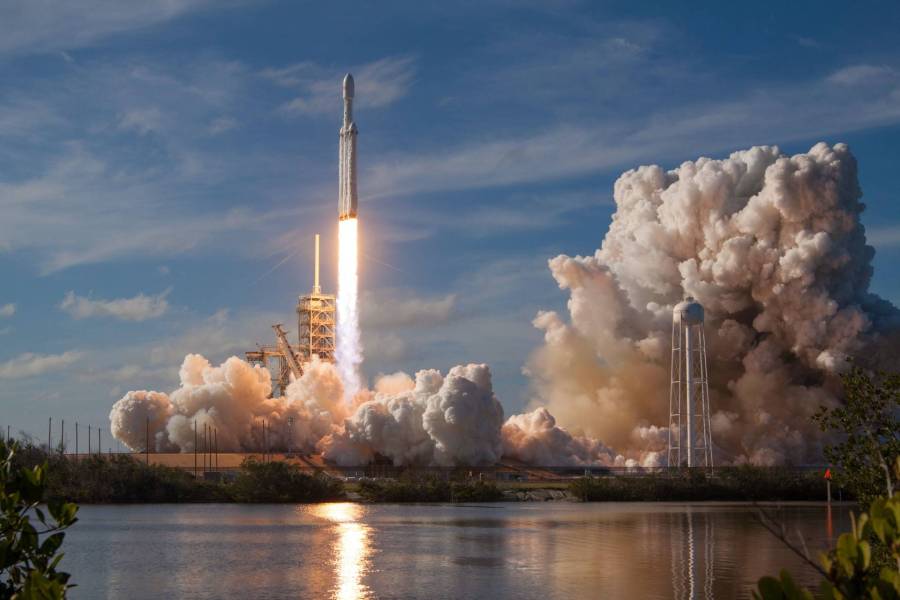NASA is launching a bold mission to send humans to Mars using nuclear-powered rocket engines. With this innovative technology, we may finally be able to get to Mars in a reasonable amount of time. NASA hopes to reduce the dangers of long-duration spaceflights by working with the Defense Advanced Research Projects Agency (DARPA) to create a rocket that uses nuclear propulsion. This article will discuss the potential of nuclear-powered rockets for the future of space travel, as well as the problems they solve.
It takes about seven or eight months for a conventional spacecraft powered by burning liquid fuel to reach Mars. Nuclear rocket engines, however, have the potential to cut that time by at least a third, making the trip more efficient and safer for astronauts. Since the trip takes so much less time, mission planners have more leeway in deciding how long astronauts should spend exploring Mars before returning home. They wouldn’t have to be gone for years if they could finish their mission in a matter of weeks or months. This would help mitigate the mental toll of being separated from loved ones.
Exposure to cosmic radiation is a major concern for astronauts on long-term space missions. Humans can get the radiation exposure that would normally take an entire year on Earth in just one day in space because they are not shielded by the Earth’s atmosphere and magnetic field. According to the European Space Agency, astronauts may be subjected to radiation levels 700 times higher than on Earth during Mars missions, where the journey may take several months. The health risks associated with prolonged exposure to cosmic radiation would be reduced if the duration of space travel could be cut in half using nuclear-powered rockets.
The Defense Advanced Research Projects Agency (DARPA) is taking the lead in creating a rocket that uses nuclear thermal propulsion. DRACO (Demonstration Rocket for Agile Cislunar Operations) is a program that plans to use the high heat produced by a fission reactor to convert liquid propellant into a gas. The gas is then directed through a nozzle to provide the spaceship with the necessary thrust. Nuclear thermal propulsion is at least three times as efficient and has greater thrust than conventional chemical rockets, allowing for quicker and more efficient space travel.
There are a number of benefits to using nuclear propulsion for space travel. To begin, nuclear-powered rockets have a smaller fuel footprint because of their increased efficiency. This efficiency boost opens up new avenues for scientific exploration and research by allowing more cargo, equipment, and experiments to be brought aboard. Second, nuclear propulsion permits more rapid travel, decreasing time in space and consequently minimizing risks and difficulties. Additionally, the use of low-enriched uranium as opposed to highly enriched uranium guarantees the continued security of the technology and eliminates any potential for nuclear proliferation.
The testing and development of nuclear rocket engines places a premium on security. Bill Nelson, NASA’s administrator, has stressed the importance of conducting the nuclear rocket engine’s safety tests in space rather than on Earth. The DRACO program is expected to debut its first demonstration as soon as 2027. This landmark will be a huge achievement for space travel and open the door for future manned missions to Mars.
The psychological toll that long-duration spaceflights take on astronauts is also addressed by nuclear propulsion. Isolation and boredom, among other mental effects, can set in after months spent cooped up in a cramped spacecraft. Nuclear-powered rockets help to mitigate these difficulties by cutting down on the time needed to travel to Mars, meaning that astronauts will spend less time cooped up inside their spacecraft and suffering from the psychological effects of isolation.
Nuclear-powered rockets are not a novel idea; the earliest designs for such engines date back to the 1960s. However, progress in nuclear propulsion halted due to public concerns following incidents like the 1979 Three Mile Island accident and the 1986 Chernobyl disaster. There is a newfound enthusiasm and political will to investigate and develop renewable energy sources and technologies. Right now is a great time to develop nuclear propulsion to its full potential and break new ground in space travel.
In summary, the development of nuclear-powered rockets through a joint effort between NASA and DARPA is a major step forward in the quest for human missions to Mars. Using nuclear thermal propulsion could drastically improve space travel by shortening journey times and reducing exposure to harmful cosmic rays. While improvements in psychological considerations help alleviate the difficulties of extended space missions, the use of low-enriched uranium helps guarantee the safety of the technology. Thanks to advances in nuclear propulsion technology, the prospects for future space exploration are brighter than ever.
First reported on NBC News
Frequently Asked Questions
What is NASA’s bold mission to Mars using nuclear-powered rocket engines?
NASA is working on a project to send humans to Mars using nuclear-powered rocket engines. These engines, developed in collaboration with DARPA, have the potential to significantly reduce the travel time to Mars and make the journey more efficient and safer for astronauts.
How do nuclear-powered rockets improve the efficiency of the Mars mission?
Nuclear rocket engines can cut the travel time to Mars by at least a third compared to conventional spacecraft powered by burning liquid fuel. This allows mission planners to consider shorter exploration durations on Mars, reducing the psychological toll of being separated from loved ones for extended periods.
What are the benefits of nuclear propulsion for space travel?
Nuclear-powered rockets offer several advantages. They are more efficient, allowing for more cargo, equipment, and experiments to be carried on board. The quicker travel time reduces risks and difficulties associated with long-term space missions. Moreover, the use of low-enriched uranium ensures technology security and eliminates nuclear proliferation concerns.
How does nuclear propulsion help with exposure to cosmic radiation?
Long-term space missions expose astronauts to significant cosmic radiation, which poses health risks. Nuclear-powered rockets’ reduced travel time can cut astronauts’ exposure to cosmic radiation in half, minimizing the associated health hazards.
What is the role of DARPA in the development of nuclear thermal propulsion?
DARPA is leading the development of a rocket named DRACO (Demonstration Rocket for Agile Cislunar Operations), which uses nuclear thermal propulsion. DRACO utilizes a fission reactor to convert liquid propellant into gas, providing the necessary thrust for space travel. This propulsion system is significantly more efficient and powerful than conventional chemical rockets.
When will the first demonstration of nuclear thermal propulsion take place?
The first demonstration of nuclear thermal propulsion, as part of the DRACO program, is expected to occur as soon as 2027. This demonstration will be a crucial milestone in advancing space travel capabilities and paving the way for future manned missions to Mars.
Why was progress in nuclear propulsion halted in the past?
Progress in nuclear propulsion was hindered in the past due to public concerns surrounding nuclear incidents like the 1979 Three Mile Island accident and the 1986 Chernobyl disaster. However, the current focus on renewable energy sources and technologies has renewed enthusiasm for exploring and developing nuclear propulsion for space travel.
What psychological benefits do nuclear-powered rockets offer for astronauts?
Long-duration spaceflights can have adverse psychological effects on astronauts, including isolation and boredom. Nuclear-powered rockets’ ability to shorten travel time to Mars helps mitigate these difficulties, as astronauts spend less time confined in cramped spacecraft.
What are the potential implications of successful nuclear propulsion development for space exploration?
The successful development of nuclear-powered rockets can significantly advance space exploration capabilities. It could lead to more efficient and rapid missions, making distant space destinations more accessible and facilitating ambitious human missions to places like Mars.
How is the joint effort between NASA and DARPA contributing to space exploration?
The collaboration between NASA and DARPA in developing nuclear-powered rocket technology represents a major step forward in the pursuit of human missions to Mars. By combining expertise and resources, the joint effort is accelerating progress in space travel and opening up new possibilities for future exploration beyond Earth.
Featured Image Credit: Unsplash


















